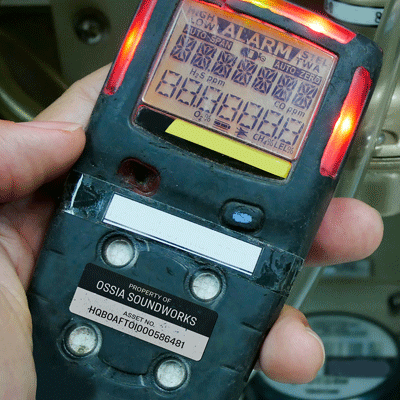Why is it important to digitally track PPE? Personal protective equipment (PPE) is a vital part of workplace safety. By digitally tracking long-term PPE more efficiently and effectively, it’s possible to maintain safety and compliance goals while reducing resources spent managing your PPE program.
Not only does OSHA list PPE requirements under many standards including 1910.132, but the agency goes further to provide a full 48-page publication to help employers comply. Supplemental PPE resources from OSHA provide further context for employer responsibilities.
In terms of digitally managing safety equipment, it’s helpful to divide PPE into three categories. 1) OSHA-mandated equipment. 2) OSHA-mandated single-use disposable items such as earplugs or latex gloves. 3) Personal items that are exempt under the OSHA rule such as non-specialty steel-toe boots and ordinary weather protection such as a parka or sunscreen.
For OSHA-mandated personal protection, responsibilities for employers include: providing, identifying and maintaining PPE; periodically reviewing, updating and evaluating PPE programs; and providing/paying for PPE for employees.
4 ways to use asset tags to streamline your PPE program
1) Avoid ordering surplus PPE
Your PPE program likely accounts for providing backup safety equipment for workers. However, there’s a line between extra gear for emergencies and unwarranted overstock. Recording accurate PPE inventory in a digital database keeps the information at your fingertips—no need to rush to count equipment for every new hire or order more items than you need.
2) Manage PPE distribution
Using PPE asset tags gives you a complete overview of all company PPE assignments, making it easy to quickly review, update and evaluate PPE programs. As workers move from different activities or switch jobs, it’s easy to see what new equipment they’ll need and what PPE should be returned.
Additionally, scanning PPE asset tags to check equipment in or out is much more efficient than manual entry. Not only are data entry errors greatly reduced but the speed of scanning barcodes versus writing or typing data is undeniable.
3) Set PPE reminders for important dates
In addition to inventory and deployment information, replacement reminders, warranty expiration dates and other pertinent information can also be captured and collected in your PPE database.
Many asset tracking programs have options for setting alerts and reminders and/or the capability of linking to digital calendars. For example, your PPE program manager can set up calendar reminders to order new equipment in advance of warranty expiration dates, leaving no gap while waiting for new equipment to ship.
4) Reduce PPE loss & discourage theft
PPE asset tags make it easier to identify missing items faster and hold employees accountable for assigned equipment. Knowing that lost or stolen items won’t go unnoticed and/or unreported can be an effective theft deterrence and encourage better care of PPE.
What kind of asset tags can be used on PPE?
Adhesive asset tag labels can be applied to any gear with a hard, moderately smooth surface. Great examples include ear muffs, face shields, welding masks, respirators and similar items. When choosing asset tag labels for PPE, the most important things to consider are materials and adhesive.
It’s important to choose heavy-duty materials designed for industrial use to make sure your PPE asset tags last the entire lifespan of your gear. One of the best materials is a durable, aluminum-fortified PET film with industrial-grade adhesive.
Aluminum-fortified PET film is generally waterproof as well as abrasion, chemical and tear-resistant. This prevents your PPE asset tags from degrading in industrial environments and preserves the scan quality of barcodes.
How to get started with PPE asset tags in your facility
Implementing PPE asset tracking is easier than you might think. Modern innovations in printable labels have made creating custom labels with barcodes easier than ever before. In fact, it’s possible to create high-quality PPE asset tags in your own facility with just a laser printer and printable industrial asset tags.
Printable industrial asset tags are optimal for getting started with tracking PPE because they offer a cost-effective, flexible solution. The initial investment can be very low when compared to ordering custom-printed asset tags or purchasing your own specialized printing equipment.
The startup costs of creating PPE asset tags can be further reduced by sourcing label suppliers that offer low or no-cost online label design software. Especially if it includes a barcode generator.
Bottom line: PPE asset tags are a more efficient and effective way to keep an eye on expensive safety equipment and there is definitely a solution out there for your facility.


Recent Comments
In addition to the personal hardship and loss...
No one will know the answer to this...
Bad drivers don't have to ruin your day...
Healthcare workers face a number of serious safety...
In my experience, truck drivers are treated with...